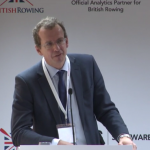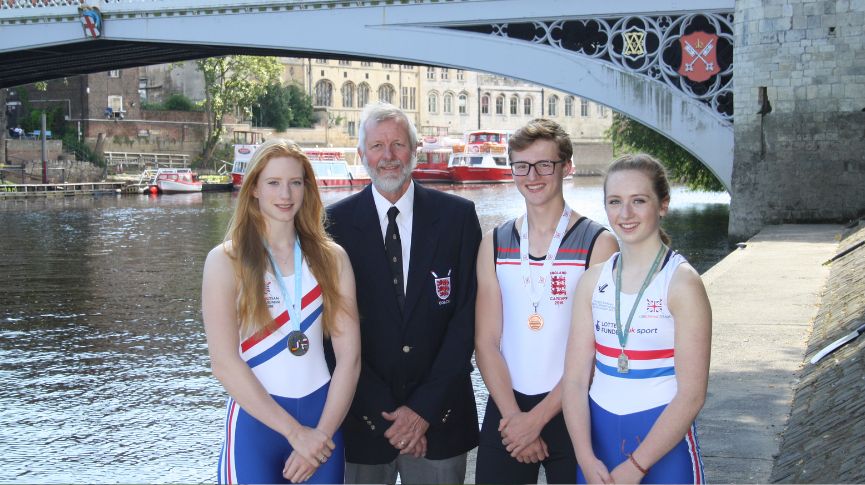Improving Performance Naturally

In January 2015, the Sports Science and Medicine Conference for Rowing was generously hosted by SAS UK & Ireland at the company headquarters in Marlow. There were a range of presentations from the conference about different areas of injury prevention and about areas where performance can be enhanced.
We are now able to share key presentations, including those aforementioned, from this conference with our wider rowing audience in the form of a YouTube playlist here (For the full schedule of videos, see below). The conference proceedings, which will include the conference abstracts, will also be published online by the BMC Sport Science, Medicine & Rehabilitation, please check their website for updates.
This includes a presentation from Professor Greg Whyte, who was voted as one of the leading UK science communicators, sharing his key findings on ‘Altitude: The Good, the Bad and the Ugly’, and Professor Stephen Seiler presenting on ‘What We Know Makes the Boat Go Faster from 150 Years of Research’.
An Insider’s View
Annamarie Phelps, Chairman, British Rowing shares her thoughts and provides an overview of the conference that was a first for our sport, which was an opportunity to bring together the world’s leading sports scientists and medical practitioners in rowing, as well as key decision-makers in the sport, to share knowledge and ideas, and to learn from one another. The conference was organised and led by British Rowing with the support of UK Sport and FISA, rowing’s international federation. Gathering an extraordinary amount of intellectual rigour and experience, the event represented a core value of our sport – teamwork. The value of the multi-disciplinary team in protecting and promoting the athlete sits very comfortably within the sport of rowing.
Across the two days against the stunning backdrop of Wittington House and Estate, rowing’s sports science and medicine community divulged best practice, answering to a vital theme of the sport and putting the athlete at the centre of development – Improving Performance Naturally.
High-level expertise was in ready supply from the speakers, and crucially all had a connection to our sport. Reflecting as a rower, who had once competed at the highest level, I learnt a huge amount and on only a few occasions did I think wistfully, ‘if we had known this in my day.’
It was quickly countered by the energising effect of seeing long-time rowing coaches who had once graduated in sports science, now fired by the information shared and wanting to revisit their studies and refresh their knowledge. The fact that delegates and speakers alike carried on discussions and debates throughout each break and after every session was an indication of the readiness of the sport for such a gathering, the topical nature of the lectures and the quality of the speakers’ presentations.
Highlights for me were provided by our opening speaker, Professor Alison McGregor, who presented on ‘Injury Prevention and Performance – Are they Mutually Exclusive?’ and Professor Stephen Seiler on ‘What We Know Makes the Boat Goes Faster from 150 Years of Research.’
Professor McGregor, has devoted 20 years of study into back pain at Imperial College; every rower’s fear; a major concern and a real hindrance to performance. The Professor revealed the advances in understanding back pain and how the application of rapidly evolving technology was now providing invaluable preventative insight through improved recording, storing and analysis of data. She said that these advances had helped dispel the traditional view that it was the scientists’ job to make an athlete go faster, the coaches’ to push them to breaking point and the doctors’ to mend them. Improvements in understanding could help change the emphasis from repair to maintenance and with more analysis and further research hopefully to avoidance altogether. Whilst athletes are more interested in performance-edge than injury-prevention, working as a team, athlete, coach, scientist and medics can ensure that elite performance is compatible with a sustainable, healthy and long active life. Reassuring to those of us looking at the next generation, and as Dr Richard Budgett, Olympic Gold medallist and Chief Medical Officer at the IOC, said, crucial for the future of sport.
Professor Seiler’s presentation was engaging and fascinating. More so because he didn’t focus solely on understanding the physiology of the athlete but provided plenty of analysis of equipment changes over 150 years suggesting a revisit to some early experiments might provide the next giant leap in making the boat go faster. I was amazed at how little the advances in physiology and training of the athlete appear to have contributed to increased boat speed over the last century and a half.
Truly revealing was that, across the forum, data mining and analysis in the field of sports science and medicine was ever-broadening, and is now leading developments in all aspects of rowing performance from learnings on technique, to cardio vascular health, to understanding natural increase in muscle mass: although the finer details of protein synthesis and carbohydrate metabolism were lost on me; leaving me wishing I had focussed more on my ‘O’ level chemistry!
As a sport which places the highest value on integrity, a conference on Improving Performance Naturally, provided a platform to learn and inquire on that vital question to which the rowing community takes to the gym and to the water – how to make the boat go faster. It was an unqualified success, joining both the leading medical and scientific minds to the coaches and rowers, like me, with no scientific background, in arming us all with new and exciting knowledge.
Day 1:
• SSM Conference 2015 1.0: Welcome (Jean-Christophe Rolland) – intro by Rosie Mayglothling http://bit.ly/1Fiputj
• SSM Conference 2015 1.1: Injury Prevention and Performance – Are They Mutually Exclusive? What Science Tells Us (Prof. Alison McGregor) – intro by Prof. Jo Hannafin http://bit.ly/1HJ8hPW
• SSM Conference 2015 1.2: Protecting the Clean Athlete, Protecting Health (Dr Richard Budgett OBE) – intro by Prof. Greg Whyte http://bit.ly/1C8eHSp
• SSM Conference 2015 1.3: Current Issues within FISA and the Medicine and Science World (Dr Alain Lacoste) – intro by Dr Tomislav Smoljanovic http://bit.ly/1JPwxld
• SSM Conference 2015 1.6: Altitude: The Good, the Bad and the Ugly (Prof. Greg Whyte) – intro by Gianni Postiglione http://bit.ly/1MVKGLT
• SSM Conference 2015 1.7: Endurance Sport and Cardio Vascular Health (Prof. Sanjay Sharma) – intro by Prof. Jürgen Steinacker http://bit.ly/1GnB22k
Day 2:
• SSM Conference 2015 2.1: Training in Extreme Hot and Cold (Prof. Mike Tipton) – intro by Dr Ann Redgrave http://bit.ly/1GGBUk8
• SSM Conference 2015 2.2: Rib Stress Fractures (Dr Anders Vinther) – intro by Dr Fiona Wilson http://bit.ly/1IEOjV4
• SSM Conference 2015 2.3: What We Know Makes the Boat Go Faster from 150 Years of Research (Prof. Stephen Seiler) – intro by Prof. Henning Bay Nielsen http://bit.ly/1GnB2zs
• SSM Conference 2015 2.4: Cardiac Case Study (Prof. Henning Bay Nielsen) – intro by Dr Ann Redgrave http://bit.ly/1L9WQ5S
• SSM Conference 2015 2.5: Analytics – What’s It All About? (Dr Laurie Miles) http://bit.ly/1LarSYd











